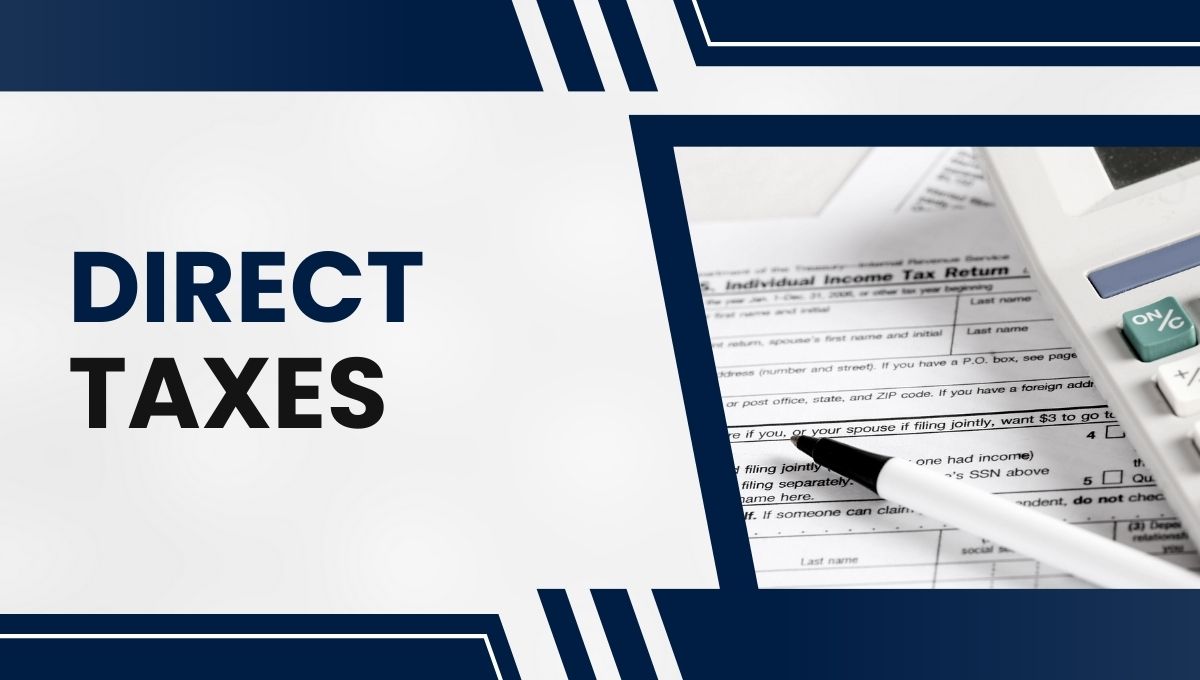Understanding the landscape of taxation is crucial for finance professionals, especially in today’s dynamic economic environment.
Imagine walking into a board meeting, and your boss asks, “What’s our position on direct versus indirect taxes?” Knowing the answer could mean the difference between confidently leading a discussion and missing out on a chance to showcase your expertise.
Let’s break down these two fundamental types of taxes in finance, direct taxes and indirect taxes, and why they matter for professionals aiming to excel in tax planning and financial accounting.
What Are Direct and Indirect Taxes?
A direct tax generally refers to a tax levied directly on a person or property instead of an indirect tax applied to transactions. Direct Taxes are those that individuals or entities pay directly to the government. They include income tax, corporate tax, and property tax.
On the other hand, Indirect Taxes can shift from one entity to another, often affecting consumers in the process. Examples include GST, excise duty, and VAT. You might encounter these taxes when you pay for products or services, as businesses add these to the price to cover their tax obligations.
Differences between direct and indirect taxes in finance:
| Type of Tax | Definition | Examples |
| Direct Taxes | Paid directly to the government, based on profits | Income Tax, Corporate Tax |
| Indirect Taxes | Shifted to consumers through the price of services and goods | GST, VAT, Excise Duty |
This distinction is more than academic. For finance professionals, especially those engaged in tax planning for finance experts, knowing the difference is critical to strategic planning and making informed recommendations on direct vs indirect taxes.
The Implications for Finance Professionals
Understanding how these taxes impact a company’s cash flow and overall profitability is key for those in finance roles. Direct taxes directly affect earnings; businesses must plan around them since they can’t get transferred.
Indirect taxes, however, create an entirely different scenario. While these taxes don’t directly impact earnings, they can affect consumer behaviour and, by extension, sales revenue.
For instance, a higher GST rate on luxury goods may reduce consumer spending in that sector, impacting the company’s sales. Finance professionals must know how these taxes flow to end-users, influencing financial accounting, taxation trends, and cost management.
Comparing the Impact of Direct Taxes and Indirect Taxes on Financial Planning
| Factors | Direct Taxes | Indirect Taxes |
| Impact on Cash Flow | Direct reduction in profits | Passed to customers through pricing |
| Strategic Considerations | Tax-saving strategies (allowances, deductions) | Pricing and consumer behaviour adjustments |
| Examples | Income, Corporate, Wealth Tax | GST, VAT, Customs Duty |
Types of Taxes in Finance: Which Are More Complex?
Direct and indirect taxes aren’t just different; they vary significantly in complexity. In India, direct taxes require a detailed understanding of the Income Tax Act, complete with updates and amendments.
This is where advanced financial accounting courses often come into play, offering a thorough understanding of compliance, corporate tax strategies, and best practices for calculating tax obligations. Though indirect taxes are sometimes easier to calculate, they involve multiple compliance levels across states due to the Goods and Services Tax (GST).
Even though GST has streamlined indirect tax management, the nuances can still pose challenges, especially for those working in cross-state and multi-branch organisations. To handle this effectively, professionals must stay on top of tax updates to manage these variables effectively.
Practical Tips: Mastering Direct and Indirect Tax Comparison for Financial Planning
Here’s a practical approach for professionals looking to sharpen their understanding of direct and indirect tax comparison:
- Stay Updated: Regularly review changes to tax laws and regulations. This will keep you informed and make you an invaluable resource in your organisation.
- Invest in Training: Consider joining a financial accounting course on tax planning. These courses often cover real-world scenarios, helping you grasp the intricacies of types of taxes in finance.
- Analyse Tax Strategies in Practice: Keep an eye on how top companies manage their tax obligations. By examining their annual reports, you can gain insights into the methods they use to reduce their tax burden legally.
- Build Client Relationships with a Tax Expert’s Mindset: Taxation in economics can be intimidating, but you’ll enhance your credibility by positioning yourself as a resource on tax planning for finance experts. Companies value professionals who can simplify tax matters and offer actionable insights.
The Bigger Picture: Accelerate Your Finance Career with Imarticus Learning
Understanding the concept of direct vs indirect taxes isn’t just about knowing the definitions. It’s about grasping the impact on an organisation’s strategy, consumer pricing, and profitability.
Imarticus Learning’s Financial Accounting & Management Programme is an industry-first, specialised programme that offers foundational finance knowledge, hands-on skills, and a strategic mindset tailored for real-world success. With over 12 years of experience, Imarticus Learning has empowered 50,000+ learners through outcome-focused courses and a unique career support framework.
Additionally, interview preparation through mock sessions and expert feedback equips you with confidence, and access to 1,000+ hiring partners guarantees seven interview opportunities.
Take the initial step towards a successful finance career—enrol with Imarticus Learning today!

